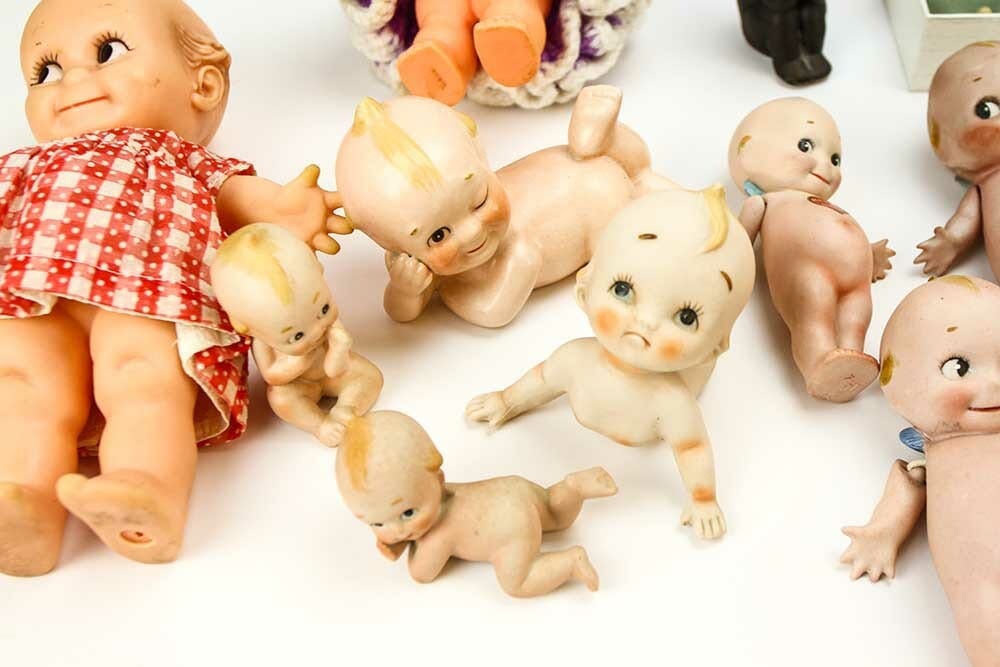The power of cute: Sianne Ngai on contemporary aesthetics 🐯
Reading "Our Aesthetic Categories" in the world of TikTok.
Today, I wanted to share a very special book recommendation. During the pandemic, I took a course called Reading Sianne Ngai: Aesthetics, Emotions, and Capitalism at the Brooklyn Institute of Social Research, and I've been thinking about Ngai's works ever since. I am fascinated by her unique point of view and her approach to analyzing contemporary culture and media.
Sianne Ngai is an American cultural theorist and literary scholar; she teaches at the University of Chicago. In her book "Our Aesthetic Categories: Zany, Cute, Interesting," she explains why traditional categories like beautiful and sublime are rarely applicable to the art and media of the 20th and 21st centuries. Instead, she offers three new categories—"cute," "interesting," and "zany"—that help navigate the world today and examines the ways in which they are tied to gender, class, and consumer culture.

The book starts with Ngai's analysis of cute—a category that is mostly applicable to consumer products:
Whether in response to socks or to large-scale, mass-mediated spectacles of public intimacy, cuteness solicits a regard of the commodity as an anthropomorphic being less powerful than the aesthetic subject, appealing specifically to us for protection and care.
Few people notice that cuteness creates a huge potential for aggression. Ngai quotes philosopher Daniel Harris to show this violent undertone in our relationships with all things cute:
Cuteness, in short, is not something we find in our children but something we do to them. Because it aestheticises unhappiness, helplessness and deformity, it almost always involves an act of sadism on the part of its creator, who makes an unconscious attempt to maim, hobble and embarrass the thing he seeks to idolise…
Ngai barely talks about internet culture, but you can easily apply her categories to the popular content that oozes out of everyone's screens. Cute is everywhere we look: dog videos, ads for Sandy Liang / Baggu collaboration, teenagers on TikTok obsessed with dark academia, etc. Fuzzy, small, light, whimsical things are incredibly powerful—by making us think that we have power over them.
Another category that Ngai suggests is "interesting." She writes:
It was Schlegel who first defined modern, interesting literature in direct opposition to the beautiful art of the Greeks. Whereas "die schöne Poesie" of classical antiquity is objectively rule-bound, universal, and disinterested (befitting a culture in which, supposedly, no metaphysical gap exists between man and nature, and no "striving" is therefore necessary to represent the ideal, "die interessante Poesie" is restlessly subjective and idiosyncratic, "content to take nothing less than everything for its province; resolved to possess and to express the entire range of human experience; [and] more interested in the individual variant than in the generic type."
Interesting is the world of podcasts, Substack, internet art, long documentaries we don't have time to watch—everything that has a promise of value, intrigue, and entertainment. It's curious enough for us to pay attention to it.
The third and final category is the notion of "zany." Here is how Ngai described it in one of the interviews:
You could say that zaniness is essentially the experience of an agent confronted by—even endangered by—too many things coming at her quickly and at once. Think here of Frogger, Kaboom!, or Pressure Cooker, early Atari 2600 video games in which avatars have to dodge oncoming cars, catch falling bombs, and meet incoming hamburger orders at increasing speeds. Or virtually any Thomas Pynchon novel, bombarding protagonist and reader with hundreds of informational bits that may or may not add up to a conspiracy.
Zany is all about performative labor or performative enjoyment (or both). "The zany more specifically evokes the performance of affective labor—the production of affects and relationships—as it comes to increasingly trouble the very distinction between work and play," writes Ngai. When I think about zany, Rupaul's Drag Race immediately comes to mind. Zany is the world of reality TV, and especially competition series where contestants are underpaid, yet they have to work overtime as the show’s popularity revolves around demonstrating a certain level of busyness and frenetic energy.
One interesting exercise is applying Ngai's aesthetic categories to a huge matrix of current online trends. On TikTok, aesthetics is a common term, but it describes something completely different and signifies any somewhat distinctive style—like cottagecore, woodland goth, old money, or strawberry/tomato girl aesthetics. Gen Z is inventing dozens of new aesthetic movements every month, but what's exciting about Ngai's point of view is that all the new aesthetics fall under one of the three categories she proposed. Most feminine-coded trends online are either cute (like french girl style) or interesting (like broquette). Meanwhile, most of the male creators lean towards interesting, zany, or both—for example, tech YouTuber Marques Brownlee's videos are interesting while Anthony Fantano's music reviews lean towards zany.
I love that Ngai's work also gives her readers tools to come up with aesthetic categories themselves. You can't help but ask yourself what categories you'd add to her list. If I had to pick one, it would definitely be "cringe." And as Ngai suggests, cringe describes a distinctive feeling (uneasiness, discomfort) and an objective style. Obscure message boards, memes like Harambe, rage bait videos on TikTok and YouTube—all of these things have a shared language and evoke a very distinct feeling of uneasiness and discomfort.
What would you add to Ngai's list? So curious to hear everyone’s thoughts on aesthetic categories, microtrends, and what’s coming after tomato girl summer.
Plus, more about contemporary aesthetics:
Merchandizing the Void by Kelly Pendergrast
After Authenticity by Toby Shorin
Twee: The Gentle Revolution in Music, Books, Television, Fashion, and Film by Marc Spitz (this one deserves a separate post — it’s coming soon)
Pastel Hell: the definitive guide to millennial aesthetics by
The Longing for Less: Living with Minimalism by

